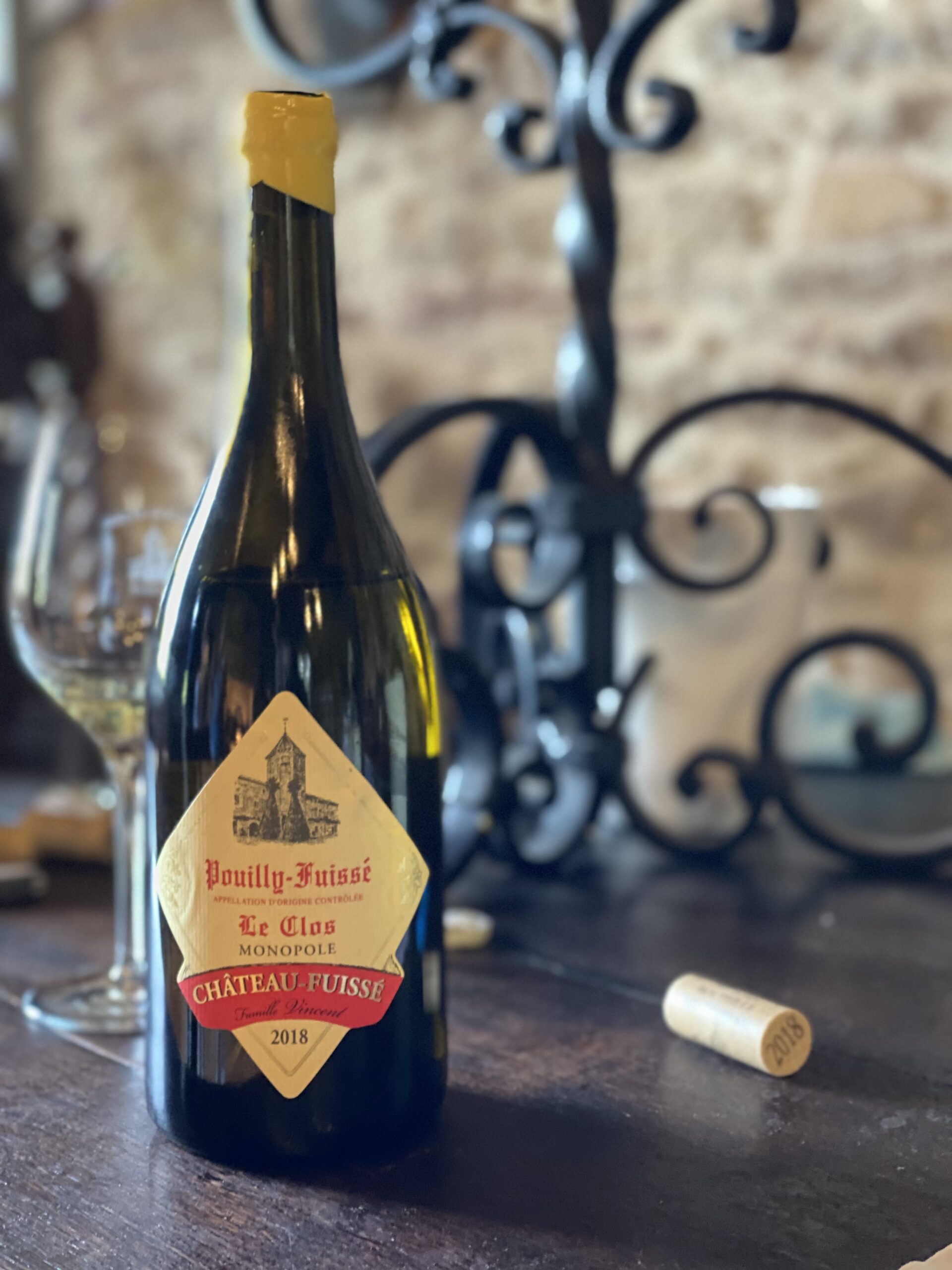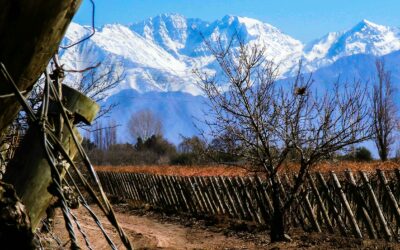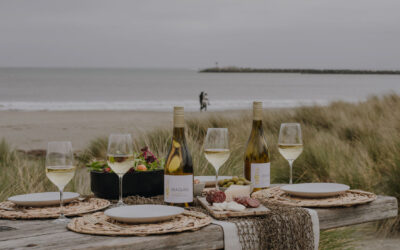Here are my notes on the wines tasted and when I think they’ll be enjoyed at their best (all tasted in this order and all best served between 10-12°C):
2018 Saint-Véran
This appellation runs to the north of Pouilly-Fuissé and south. Bénédicte explains that 85% of their vineyards are in the north and 15% are in the south next to Beaujolais.
Vinified in stainless steel only, with battonage (lees stirring) to improve mouthfeel and add a little fatness. This has a freshness that reflects the chalky and granitic soils upon which the vines are planted.
The aromas are lifted with citrus and peach notes dominating and a faint whiff of hawthorn flowers. It has a lovely salty tang in the mouth on entry after which follows a finely textured, ripe-fruited wine with a clean and refreshing finish. Nice length. The perfect partner for sushi and shellfish. Ideal now until 2025.
2019 Pouilly-Fuissé, Tête de Cuvée
Bottled in January/February this year, this is the flagship wine of the estate and blends hand-harvested grapes from 45 different climats scattered across Fuissé and Solutré. Fuissé’s soils are mostly clay based while Solutré’s are limestone. The former adds weight and richness and the latter, freshness and salinity. 70% of the wine is fermented in oak barrels ranging from new to 5 years old. Around 20-30% of this component is new wood so relatively little.
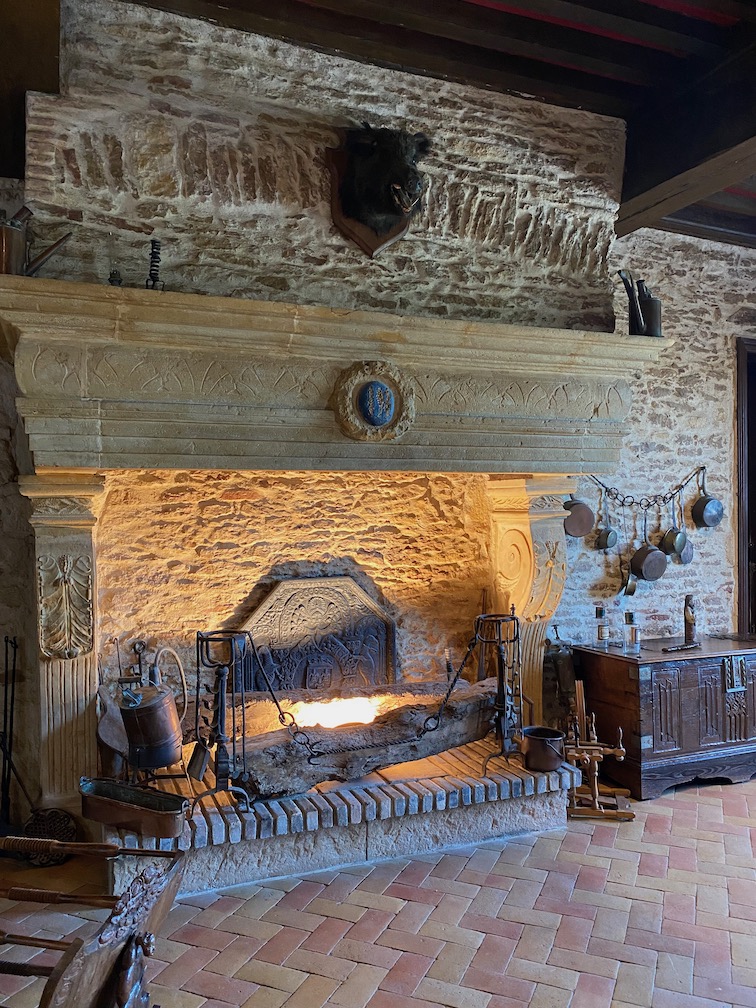
This clearly feels young but the nose is quite full and assertive already. This vintage is around 30-40% lower than average so there’s plenty of concentration. The oak is a little pronounced at this stage but not in a bad way. It has floral elements and plenty of ripe melon and fresh grape scents. Rich and powerful on the palate, it has a mineral touch and the oak is surprisingly well-integrated for such a young wine. A lovely persistent finish rounds it off nicely. Pan-fried fish with an herb butter sauce would be ideal. Enjoy from 2022-28.
2018 Pouilly-Fuissé, Les Combettes
A small, north-east facing vineyard towards the western edge of Fuissé, flanked to the west by a small patch of woodland. This is a 0.8 hectare vineyard and produces just 2,000 bottles. There’s a high limestone content in the soil which becomes very evident when you taste the wine. One of the climats set to be promoted to Premier Cru. 100% fermented in 3-5 year old barrels.
On the nose, the oak is well concealed behind the citrus and white flower scents. This is linear in the mouth showing a soft but marked acidity that keeps a sense of precision. It’s elegant and harmonious and shows a nice floral and white peach character with a touch of spice from the oak. This would work really well with Monkfish or Salmon but no creamy sauces. Ideal now until 2024.
2018 Pouilly-Fuissé, Les Brûlés
Sitting on the top of the hill around 200-250m away from Les Combettes, this south-facing vineyard, also destined for Premier Cru status, is aptly named due to its full exposure to the sun (‘brûlés’ meaning burnt). The soil is a mixture of blue clay and marl with limestone pebbles. In an average year, they produce around 3,000 bottles. In 2021 there will be half that due to the extensive frost and hail damage. The corpulence and structure of this wine means that it can take 100% new oak for both fermentation and maturation.
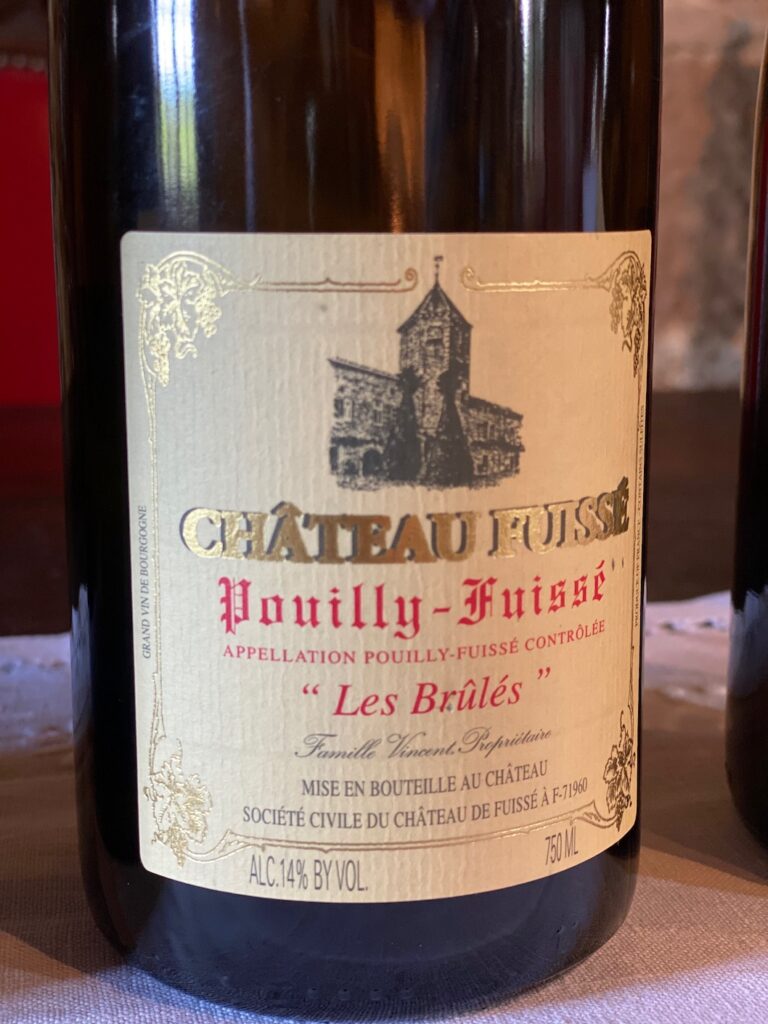
Interestingly the oak doesn’t dominate either the nose or palate as might be expected for a relatively young wine. There’s great intensity of fruit and spices too, like a classic apple Tarte Tatin. Expansive on the palate, there’s a lovely mineral freshness underlying the textured fruit, hazelnut and spice notes with an underripe pineapple-like bite on the finish. It lingers on and on. Pair with turbot, skate wing or even poultry with a creamy sauce. Enjoy from 2022-28.
2018 Pouilly-Fuissé, Le Clos (Monopole)
A mere 20-30 metres away from Les Brûlés, this solely-owned vineyard rises up a gentle slope from the rear of the Château. This will be the only Monopole Premier Cru vineyard from 2020. Clay at the bottom of the vineyard adds weight to the wine, marl in the middle adds finesse and balance and limestone at the top brings freshness and minerality. The vineyard was re-planted in 1929 by Bénédicte’s Great Grandfather Jacques and some vines have been replaced, when necessary, over the years. Some are over 90 years old and many are still over 50 with the youngest around 30-35 years old. In 2020, they started picking on the 25th August. This year it will be a month later! New oak is only used for the clay component and the rest goes into used oak.
Power and intensity make the first impression as soon as the glass moves under the nose. There’s hazelnut and frangipane and the soft floral tones of ripe, yellow-fleshed fruits too. Another powerhouse on the palate but lovely balance and salinity from the limestone component making it complex and well integrated. Multi-layered and weighty yet wonderful finesse too. The finish is outstanding and doesn’t stop. This can handle more flavoursome foods similar to Les Brûlés, plus rich pâté’s and Asian influenced fish and poultry dishes. Enjoy from 2023-30.
Once the tasting had finished in the historic ante-room, within the 15th century pentagonal tower, Bénédicte walked us round to the base of the Le Clos vineyard to show us the three single-vineyard plots relating to the last three wines that we’d just tasted. This was a great way to understand how the characteristics of the vineyards translated through to the wines.
• For an overview on this iconic producer, click here
